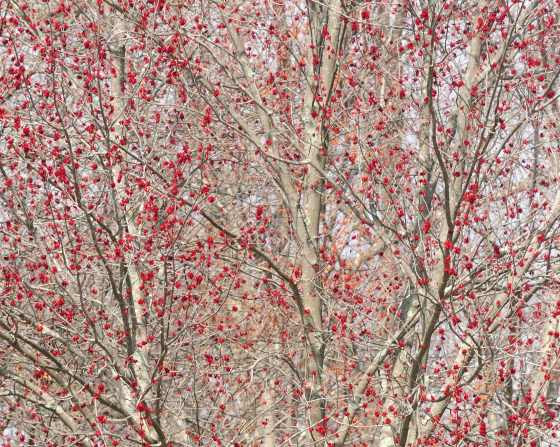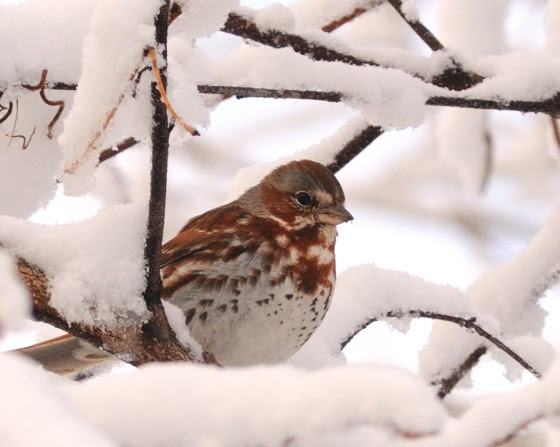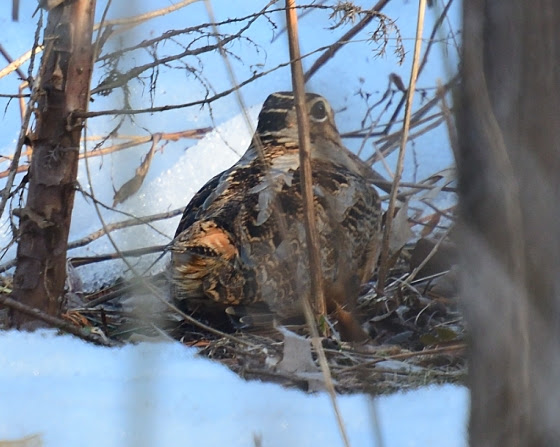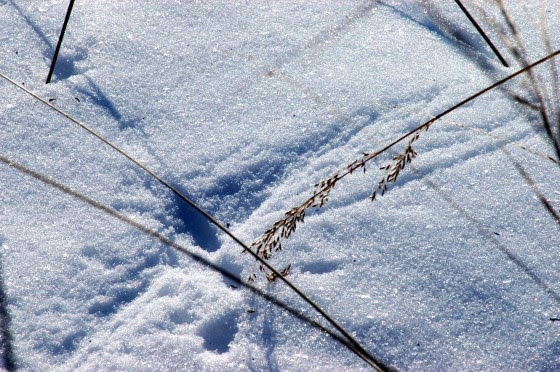The Edge of Winter
Article and photos by Joe Mish
The fluffy white blanket of an early March snowstorm, preserved by the cold days that followed, began to shrink as the sun fought the darkness for dominance. The snow cover was still unbroken as it grudgingly settled lower each passing day. Eventually the white blanket would lose its loft and become threadbare, unveiling the gravid brown earth.
The days following the storm dawned clear and cloudless. The night sky was a showcase of brilliant white diamonds, alive with energy as they sparkled in the infinite celestial darkness.
An hour before sunrise the west facing snow covered hillside reflected enough light to reveal the fine detail of the skeletal silhouettes of every tree and bush that stood above the white ground cover. Even as the sky began to brighten, the entire hillside remained in shade, preserving the dramatic pre-dawn contrast. For a few slow minutes, the sky above the hill was bathed in a diffuse aura of gold, fading into white, which blended into the palest blue, growing more intense as the brightest stars lingered and were lost among the deepening blue background. For a long moment, night and day, past and present coexisted at one glance. The dynamic scene, frozen on an imaginary vertical tapestry, the black and white hillside held in sharp contrast to the gold and sunlit blue sky above.
In a way, that dawn was symbolic of the dichotomy of March, as the month ushers in the last cold breath of winter and departs amid life emerging from dormancy under the influence of increasing daylength.

Bird migration is now in full swing as flycatchers, osprey, and colorful warblers make their appearance.
Great horned owls, hatched a month earlier, are flightless and near adult size.
March is the best time to find migrating woodcock and observe the unique mating flights performed by the males at dusk, choreographed to impress a potential mate. Woodcock were common locally in open woods and damp fields. As habitat dwindles, any sighting becomes a rare treat. When March rolls around I head for a likely spot where a swale is formed by the earlier mentioned hillside. The hillside is drained by a seasonal stream which remains wet where the gradient levels. The saturated soil creates a perfect environment for earthworms, the main food source for migrating woodcock. Woodcock, also known as Timberdoodles, will often sit tight and allow a close approach.
All migrating birds must deal with unpredictable weather anywhere along their migration path. So, arrival at any one location will vary from year to year. It is somehow comforting when birds that migrate through, show up on schedule. All is right with the world. When snow buntings, headed to points north, stop over at a specific location year after year, a dependence of sort can develop on behalf of the observer. The snowbirds become a reference point, much as a birthday or anniversary.
March provides the ‘wind beneath the wings’ of migrating birds as well as sweeps the land and grooms the trees, wind and March are inseparable.
March has earned the reputation as the month of relentless wind as it rushes mercurial weather on and off the stage to stir the breeze. Think about the wind and the scale of expression from hurricanes and tornadoes to a gentle whisper, where the wind uses a dried stem of grass or tree branch to etch its thoughts in the snow or on the side of an old wooden barn.
The first day of spring will happen on the nineteenth day of March, 2024, at 11: 06 pm. Day and night reach perfect equilibrium for a split second as winter surrenders to spring.
Author Joe Mish has been running wild in New Jersey since childhood when he found ways to escape his mother’s watchful eyes. He continues to trek the swamps, rivers and thickets seeking to share, with the residents and visitors, all of the state’s natural beauty hidden within full view. To read more of his writing and view more of his gorgeous photographs visit Winter Bear Rising, his wordpress blog. Joe’s series “Nature on the Raritan, Hidden in Plain View” runs monthly as part of the LRWP “Voices of the Watershed” series. Writing and photos used with permission from the author.



